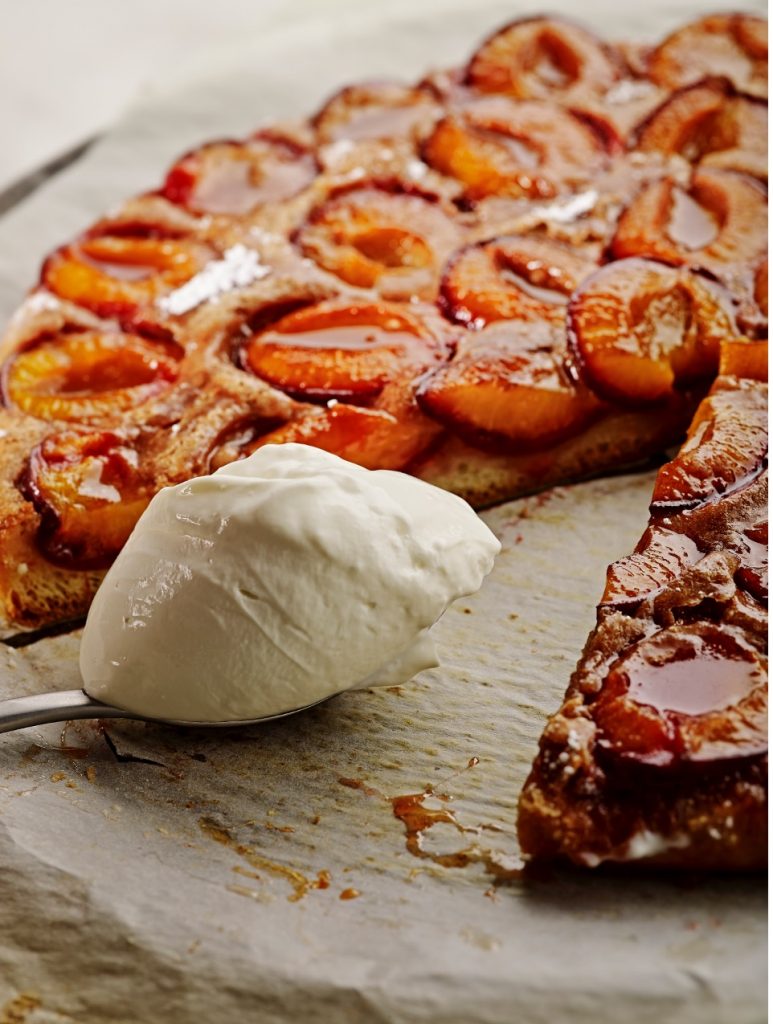EVENTS
All articlesthe plum
In the beginning, there was the plum tree. This fruit tree can be traced back thousands of years to its roots in Asia. Indeed, plum growing seems to be very ancient; some archaeologists have found kernels on sites dating back to the Bronze Age. We’ve also discovered that the Egyptians placed dried plums in the tombs in the Pyramids!
The plum made its appearance in Europe thanks to the Romans. In France, we had to wait for the Middle Ages, and particularly the Renaissance, for this fruit to receive the recognition it truly deserved.
These days, plums are bound up with history through the names we give them.
- The Damson (or “Damascus plum”) is thought to have been brought back from Syria by the Crusaders,
- The greengage is known in France as the “Reine Claude”, named after the first wife of François the First,
- The French have also named another variety “Prune de Monsieur”, using the nickname for Gaston d’Orléans, brother of Louis XIII, who could not get enough of them.
But what are the different varieties of plum, and how do they compare?
There are more than 2000 varieties around the world, but in Europe we classify them into groups, by colour: Green (greengages, for example), blue (Quetsches and many others), and orange (mirabelles and the like). Alongside those is the Ente plum, which gives us the famous Agen prune. To create those, the Ente plum is picked, sorted, washed with fresh water and then baked at 85 °C for about 18 hours. This is where the magic happens, and at the end you’ll have a very dry prune with 25% humidity and which can be stored for up to 4 years in a suitable refrigerator.

Now for the practical bit. How do you select a plum? The fruit needs to have some “give”, but it mustn’t be soft. The skin should be smooth and unmarked. You might notice a while bloom on some plums. There’s nothing to worry about; this is a wax that the fruit produces to protect itself from the heat. You can also look at its designation of origin: IGP or Label Rouge are both possible.
The plum season runs from June to November, and the fruit can be kept for a maximum of 10 days in the refrigerator or 3-4 days out in the open. A plum can be stoned and frozen to keep those flavours available all year round.
In France, plums are generally used in sweet dishes, such as tarts, compotes and jams. There is no shortage of ideas, from quetsch gâteau to mirabelle tart, or plum clafoutis to the iconic Breton dish: far with prunes. Following on from this article, we’ve provided a delicious recipe from our chef Thierry Mulhaupt. But be sure not to overlook the ways it can be incorporated into savoury dishes. Indeed, the prune makes the perfect partner for meats and cheeses, and its little touch of acidity can really liven up a salad.
Whether you’re enjoying it in a sweet or savoury setting, this fruit will do you a lot of good; it’s rich in Vitamins E and B9, it’s low in calories, and your digestive system will thank you for it too!
Is there any medicine more enjoyable than a plum?!

Leave a Reply Cancel reply
BRIEFLY
Laurent Le Daniel has just been named a Chevalier dans l’Ordre National du Mérite. Congratulations to him for this prestigious award, which rewards a passionate pastry chef very invested in the sustainability of his profession.
Prepare Valentine’s Day! Take the time to discover the chocolate or fruity sweets offered by our chefs for sale online. By ordering this week you will be delivered on time.
The French team is selected for the Pastry World Cup! She won the European Cup ahead of Italy and the United Kingdom who are also selected for the grand final in January at Sirha.
JOBS
Pâtisserie
La maison Zanin recrute pour son laboratoire de Sallanches un Second pâtissier en CDI – 39h. Toutes les informations ici !
Pâtisserie
La maison Ducobu, en Belgique, recrute sur différents postes. Toutes les informations ici.





